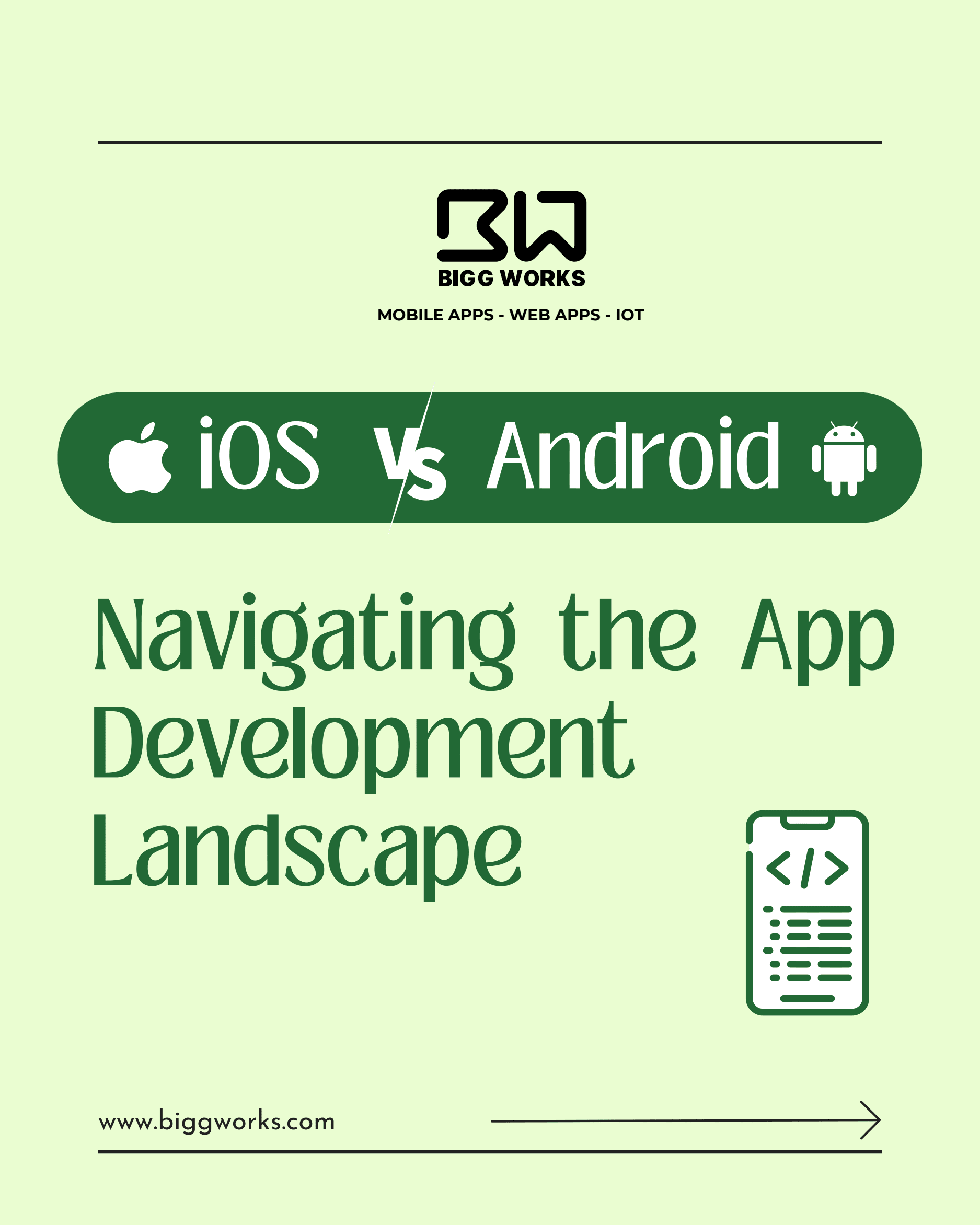iOS vs. Android: Navigating the App Development Landscape

In the dynamic realm of app development, the rivalry between iOS and Android has been a defining aspect. Understanding the nuances of these platforms is crucial for crafting successful mobile apps. This article delves into the key differences between iOS and Android app development, offering insights to help developers make informed decisions.
Design Consistency:iOS apps adhere to strict design guidelines, resulting in a cohesive and polished user experience.
Security Emphasis:Apple's stringent app review process ensures enhanced security, reducing the risk of malware.
Monetization Potential:iOS users tend to spend more on apps and in-app purchases, offering revenue potential.
Time:Separate codebases can extend development timelines.
Resource Intensive:Requires distinct teams for iOS and Android.
Platform Expertise:Developers need specialized skills for each platform.
Fragmentation Challenge:The wide array of devices and screen sizes demands meticulous testing and adaptation.
Open Source Advantage:Android's open-source nature enables greater customization and innovation.
Market Share Dominance:Android holds a larger global market share, providing a broader user base.
Flexible Distribution:App distribution is less restrictive, allowing various distribution channels beyond the Google Play Store.
Xcode IDE:Apple's integrated development environment streamlines coding, debugging, and testing.
Swift Language:Swift offers a modern, concise, and safe coding language, enhancing developer productivity.
Tight Integration:Apps can seamlessly integrate with other Apple devices and services for a cohesive ecosystem.
Android Studio IDE:Google's official IDE provides a comprehensive toolkit for Android app development.
Kotlin Adoption:Kotlin, a modern programming language, is gaining traction for its conciseness and safety.
Adaptable Libraries:A wide range of libraries and frameworks offers developers flexibility and options.
Higher Spending:iOS users tend to have higher app spending patterns, making monetization attractive.
Global Markets:While iOS is strong in Western markets, Android dominates emerging markets.
Broader Reach:Android's prevalence in emerging markets offers wider geographical reach.
Diverse Demographics:Android caters to a diverse user base with varying socioeconomic backgrounds.
Ultimately, the iOS vs. Android choice hinges on project goals, target audience, and resources. iOS excels in design consistency and premium user experience, while Android offers diversity and global reach. Consider factors like budget, user behavior, and development expertise when making your decision. By understanding the intricacies of both platforms, developers can navigate the app development landscape with confidence and precision.
#MobileAppDevelopment #AppDevelopment #NativeApps #CrossPlatformApps #iOSApps #AndroidApps #PWAs #ReactNative #Flutter #Xamarin #MobileTech #CodeEfficiency #UserExperience #AppSolutions #TechInnovation #UIUXDesign #DigitalExperiences #HybridApps #MobileDev #AppProgramming